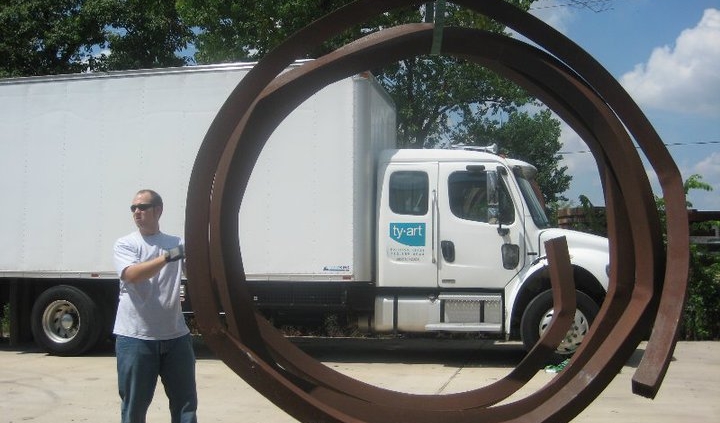Transporting Artwork
An artwork is a particularly fragile object, be it a painting, a sculpture or a piece of antique furniture. It is therefore essential to take all the necessary precautions for its transportation, whether it is done in the context of a museum exchange, the purchase of an artwork or the relocation from a private collection. While museums have professionals to take care of the transportation of the artworks, this is not always the case for individuals. Here are some tips to best protect your artwork during its transport.
CHECK THE ARTWORK AT ITS DEPARTURE AND ARRIVAL
It is important to check if the artwork is in good condition, before packaging and upon arrival after unpacking. This is called a condition report, which is necessary if you want to sell an artwork of great value. This condition report is first used to verify that the object is not too fragile to be transported, but also to ensure that it has not been damaged during the transportation. It must mention all the defects that the artwork could have before transport (stains, brittleness, perforations, various traces), the details of its assembly and its framing if necessary, as well as good quality photos showing the general condition of the artwork. This document represents a written proof that will be required by your insurance in case of any subsequent damages to the artwork.
PREPARE AND PACK THE ARTWORK
The careful preparation and packaging of the artwork is very important to ensure it is well protected during the expedition. Poor conditions during transportation can be the cause of sometimes irreversible deterioration. The packaging must be able to withstand shocks, which are very common during air transport, deformations, as well as variations in temperature and humidity that can be very dangerous, especially for old paint.
At TyArt, we generally place three layers to protect the artwork: firstly, a flexible and chemically neutral material to cover the artwork; then, a thicker layer to absorb shocks; finally, a rigid packaging. If the artwork in question is a painting, or a framed photograph, it is also recommended to use foam corner pads to reinforce the parts that are particularly exposed to damage caused by dropping the packaging.
When properly packaged, the artwork should be placed in an appropriate container for its size, weight and fragility. Whether it is a rigid cardboard box, a wooden box or a hermetic box (depending on the fragility of the artwork), the container must be provided with a padding and a rigging system to limit vibrations, and to prevent the artwork from moving and being damaged during transport. The use of the rigid box is necessary when the artworks requires protection, especially during very long-distance shipments.
CHOOSE A SPECIALIZED TRANSPORTER
If you are unfamiliar with the transportation of art pieces, we recommend that you use a specialized company that has all the necessary equipment and expertise. These professionals are specialized in the packaging and handling of precious and fragile objects. Some companies also offer specific types of transport in adapted vehicles equipped with performance suspensions or interior upholstery. Here at TyArt transporting artwork is our specialty!
ABOUT THE BUSINESS:
While dealing with artwork, it is best to seek professional help. TyArt is an art handling company, well known and recognized for its authentic services. We offer various services like an art installation, art carting, art storage, and picture hanging. For more information, contact us at 713-869-4044, write a mail to tyart@tyart.com, or fill the contact form.





Leave a Reply
Want to join the discussion?Feel free to contribute!